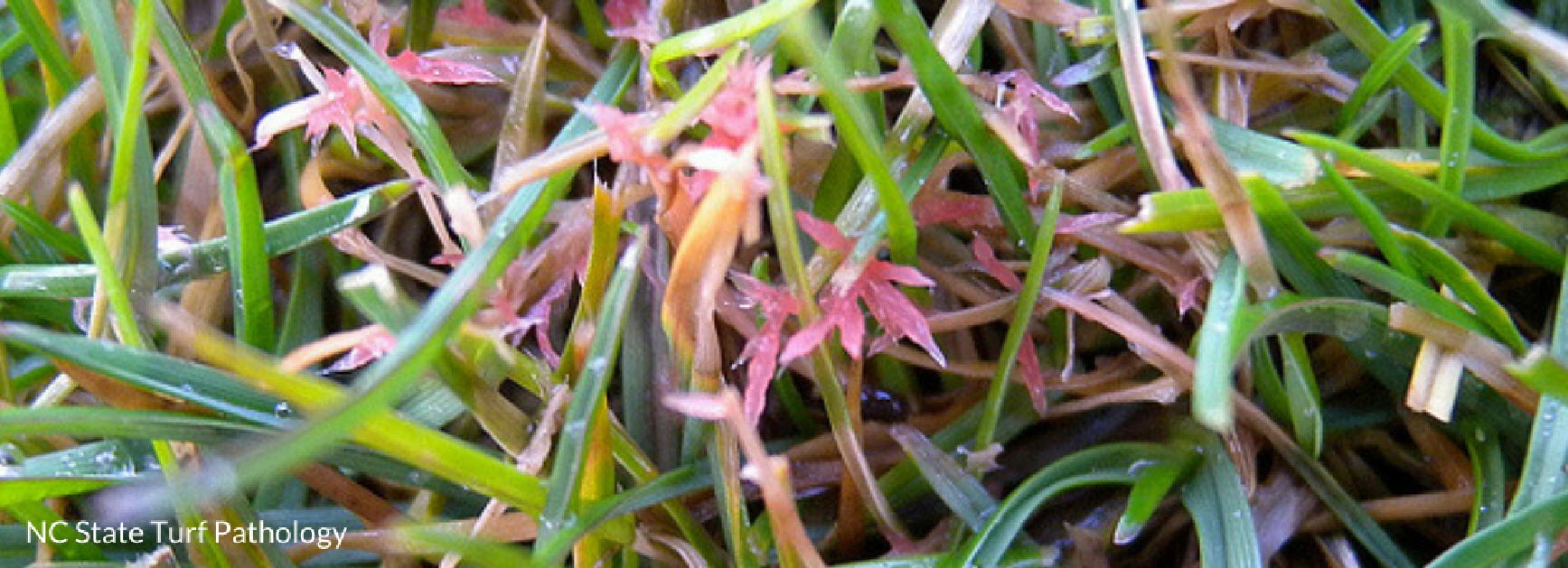Red Thread

North (only)
Grass species affected
- Fescues
- Kentucky bluegrass
- Rye grass
Disease occurrence
- Early-spring
Symptoms
- Pinkish-red threads form around leaf blades and bind them together.
- The red threads will be most visible when the lawn is wet. You may also see red spores on your mower and shoes.
- The affected turf will eventually turn brown.
Management
- Regular aeration and dethatching are the best lawn care practices to prevent red thread.
- Mow at the proper height for your grass species.
- Reduce the amount of shade on the lawn as you are able.
- Mow unaffected areas first and diseased areas last to avoid infecting a healthy lawn.
- Collect and dispose of grass clippings in the garbage when the red thread disease is present.
- To avoid spreading the fungus, after mowing, clean the mower blades by rinsing with water and drying with a cloth.
- A regular fertilization schedule will help eliminate one of the primary causes of red thread. Maintaining proper levels of nitrogen and phosphorus has been correlated to decrease a lawn’s susceptibility to red thread.
- Water deeply and infrequently early in the day to allow the leaf blades to dry off and not remain wet for long periods of time.

